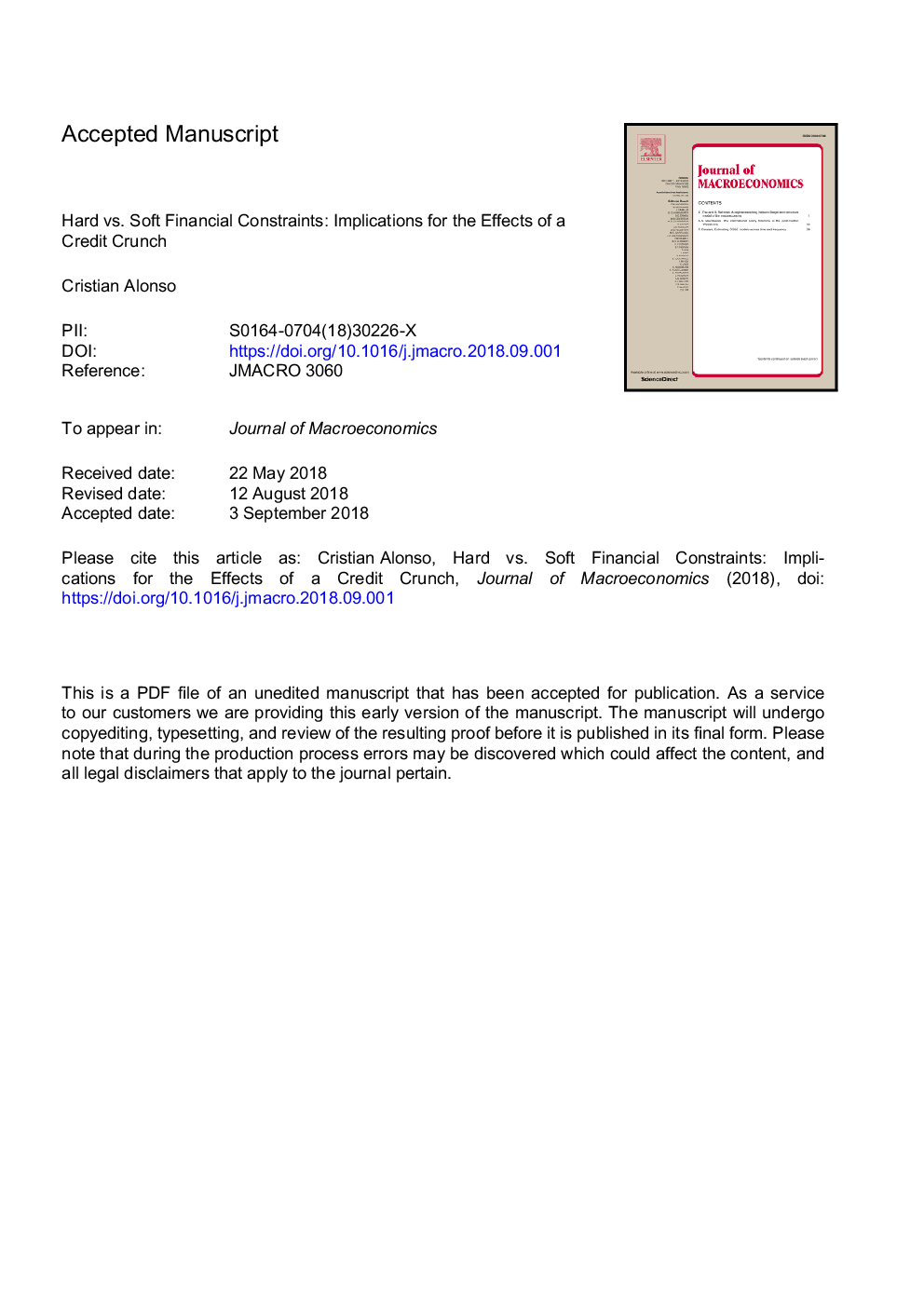| کد مقاله | کد نشریه | سال انتشار | مقاله انگلیسی | نسخه تمام متن |
|---|---|---|---|---|
| 11031332 | 1646024 | 2018 | 40 صفحه PDF | دانلود رایگان |
عنوان انگلیسی مقاله ISI
Hard vs. soft financial constraints: Implications for the effects of a credit crunch
ترجمه فارسی عنوان
سخت در مقابل محدودیت های مالی نرم: تاثیرات در اثر یک بحران اعتباری
دانلود مقاله + سفارش ترجمه
دانلود مقاله ISI انگلیسی
رایگان برای ایرانیان
کلمات کلیدی
ترجمه چکیده
پس از رکود بزرگ، درک اینکه چگونه مصرف خانوارها به یک بحران اعتباری پاسخ می دهد، هدف اصلی اقتصاد کلان بوده است. اکثر پژوهش های اخیر این سوال را با استفاده از یک محدودیت سخت مورد بررسی قرار داده اند؟ دستگاه مدل سازی، جایی که خانوارها می توانند در نرخ بدون ریسک قرض بگیرند تا فقط مقدار خارجی باشد. روش جایگزین و واقعی تر برای اصلاح اصطلاحات مالی این است که اجازه دهیم خانوارها تا حد ممکن قرض بگیرند اما با نرخ بهره بستگی به سطح بدهی دارند. من به دومی به عنوان یک محدودیت نرم افزاری اشاره میکنم؟ مدل. در یک چارچوب بازارهای کامل ناقص با عوامل ناهمگون، دو اقتصاد را فقط در نوع محدودیت مالی که خانوارها در آن قرار دارند متفاوت می کند و من نشان می دهم که بحران اعتباری در اقتصاد محدودیت (یعنی کاهش در میزان محدودیت قرض گرفتن خارجی)، کاهش می یابد مصرف به طور قابل توجهی شدیدتر از حد معقولی در نسخه محدود نرم (یعنی افزایش نرخ بهره قرض). من نتیجه می گیرم که پیامدهای کمی از یک بحران اعتباری تا حد زیادی به رویکرد مدل سازی بستگی دارد.
موضوعات مرتبط
علوم انسانی و اجتماعی
اقتصاد، اقتصادسنجی و امور مالی
اقتصاد و اقتصادسنجی
چکیده انگلیسی
In the aftermath of the Great Recession, understanding how households' consumption responds to a credit crunch has been a central goal of macroeconomics. Most of the recent research has explored this question using a “hard constraint” modeling device, where households can borrow at the risk-free rate only up to an exogenous amount. An alternative, and more realistic, way to model financial frictions is to allow households to borrow as much as they want but at an interest rate that depends on the level of debt. I refer to the latter as the “soft constraint” model. In a Standard Incomplete Markets framework with heterogeneous agents, I calibrate two economies differing only in the type of financial constraint that households face and I show that a credit crunch in the hard constraint economy (i.e. decrease in the exogenous borrowing limit) produces a drop in consumption significantly more severe than an equivalent crunch in the soft constraint version (i.e. increase in the borrowing interest rate). I conclude that the quantitative consequences of a credit crunch largely depend on the modeling approach.
ناشر
Database: Elsevier - ScienceDirect (ساینس دایرکت)
Journal: Journal of Macroeconomics - Volume 58, December 2018, Pages 198-223
Journal: Journal of Macroeconomics - Volume 58, December 2018, Pages 198-223
نویسندگان
Cristian Alonso,
